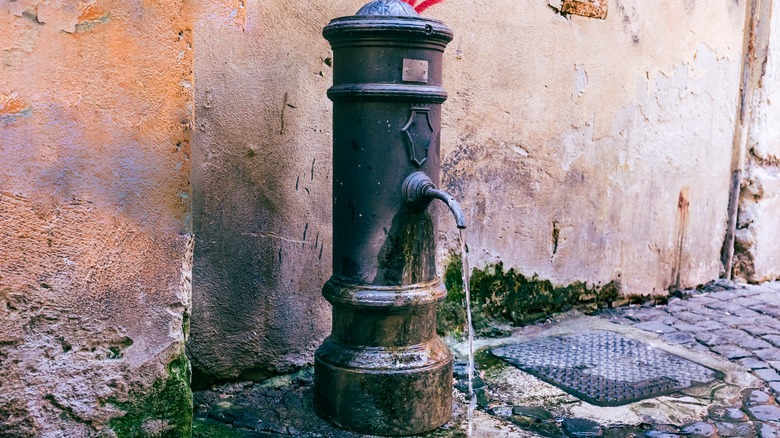Is Drinkable Water Actually As Difficult To Find In Europe As Americans Make It Seem?
It's important to stay hydrated, especially while traveling — it's good for both your physical and mental health to help keep you going in a new environment, making a reusable water bottle a must-pack travel accessory. But is it just Americans who are concerned about their water intake? Social media posts from some American travelers dedicated to wondering if and how much water Europeans drink have gone viral. But is it such a problem, especially if you know where to look and what to ask for?
@ditchthedistrict What is the secret?? Half my travel budget is water I swear #internationaltravel #asktiktok #americansabroad #europetiktok #europetok
The online debate seems centered on videos like the one above, and this is just the tip of the iceberg. One person posted on X, formerly known as Twitter, "idk what europeans have against drinking water but i'm getting right sick of dehydration mate." On the flip side, some commenters point out that Europe contains many different countries, so it's impossible to generalize. Others just seem confused as to what the problem actually is: "idk what kind of Europe y'all visited but I am from Czechia, drink my 2 litres of water every day without an issue??? I don't get it," one person commented. With such diverse opinions, it can be tricky to figure out the real situation.
Tap water is (typically) safe but not always the go-to at restaurants
Tap water in Europe, by and large, is safe to drink. As such, you should feel free to refill your water bottle on the go or at your hotel before heading out for the day. However, not every tap across Europe produces potable water. Exercise reasonable caution, particularly outside of western and central Europe. With the overall safety of European drinking water established, it begs the question of why so many people on social media think it's not consumed there. The answer could be an example of cultural differences at play.
When ordering water at a restaurant in the U.S., your server will likely bring you a glass of tap water with frequent, free refills whenever they see your glass running low. However, in Europe, staff might assume an order of water with no other qualifiers means bottled or sparkling water. That assumption seems to come from an idea that Europeans may want a more elevated or exciting option than ordinary tap water with their food when dining out. To help avoid this potential mix-up, designate that you would like tap water when you order.
Many European cities have free water
Even if you ask for and receive tap water at a European restaurant, you might still get charged for it, depending on the venue and the country. For example, one person posted on X, "I was just in Barcelona and not a single restaurant had water at the table, we were actually charged for tap water by the glass everywhere."
If you plan to eat on a shoestring budget in Europe, you might balk at an added charge for water. Thankfully, many major European cities have freely accessible H2O. Rome has over 2,000 water fountains where you can get safe drinking water. Not the big fancy ones like the Trevi Fountain, but smaller cylindrical fountains called "nasoni." Similarly, the "Refill London" initiative has put in thousands of free, refillable water stations around the city. In Lisbon, you can download the Water-Map App for directions to the nearest free source of agua. Paris has its Wallace Fountains, used since 1872. But the City of Lights didn't stop there; it features over a dozen public fountains where you can get sparkling water at no charge.
If you worry about staying hydrated on your next European vacation, do some online sleuthing to learn about the situation at your destination. Knowing when and where to get free water on your trip will help you feel more confident.


